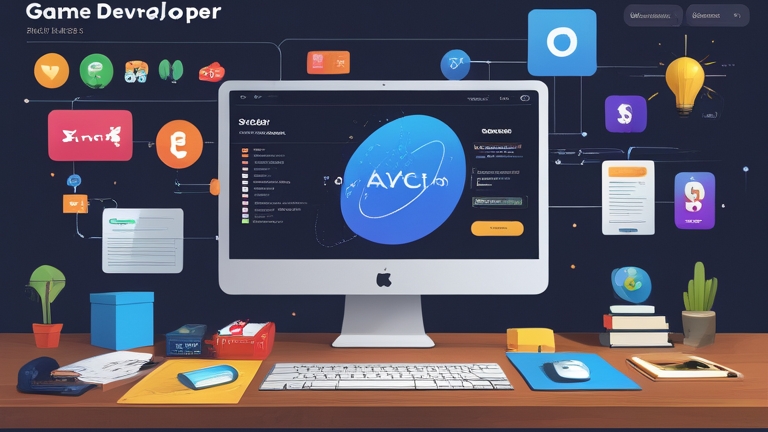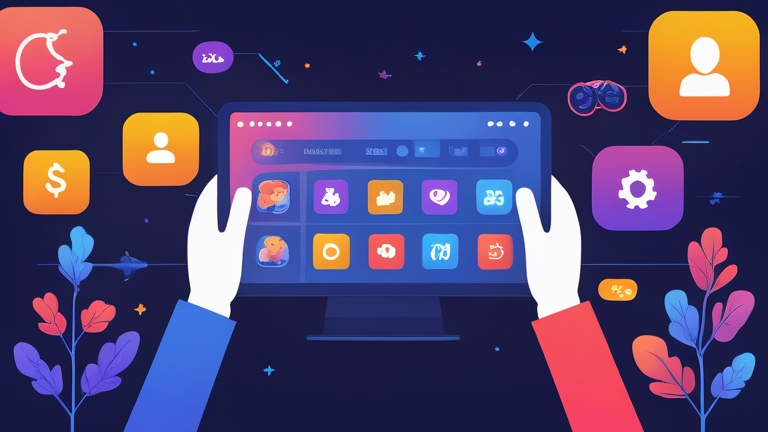In the dynamic world of online entertainment, browser games offer an accessible and engaging platform for millions. But beyond creating compelling gameplay, how do developers ensure their creations are sustainable? The answer lies in effective browser game monetization strategies. Whether you’re an indie developer launching your first title or an established studio looking to diversify revenue, understanding simple, impactful ways to earn from your web games is crucial. This post will guide you through practical methods, tools, and best practices to transform your passion project into a profitable venture.
Materials & Supplies

Successful browser game monetization isn’t just about ads; it requires a strategic toolkit. While your game engine (like Phaser, PixiJS, or Godot for web exports) is essential for creation, specific tools are needed for revenue generation:
- Analytics Platform: Tools like Google Analytics, Unity Analytics, or custom backend solutions are vital for tracking player behavior, ad impressions, in-app purchases, and overall engagement. Data drives effective monetization.
- Ad Network SDKs: Integrate AdSense, Unity Ads, AdMob, or custom ad exchanges for in-game advertisements (banner, interstitial, rewarded video).
- Payment Gateway Integration: For in-app purchases (IAPs) or subscriptions, you’ll need to integrate secure payment solutions like Stripe, PayPal, or platform-specific APIs.
- Backend Server/Database: To manage user accounts, virtual currencies, leaderboards, and IAP validation, a robust backend is often necessary (e.g., Node.js with MongoDB, Firebase).
- Content Delivery Network (CDN): Essential for fast loading times and smooth user experience, which directly impacts player retention and, consequently, monetization potential.
- Version Control System: Git (with GitHub/GitLab) is indispensable for managing code, tracking changes, and collaborating, especially when integrating complex monetization features.
Timing / Development Schedule
Implementing monetization should be considered early in your game’s development lifecycle, not as an afterthought. Here’s a typical timeline breakdown:
- Concept & Strategy (Weeks 1-2): Research and decide on your primary monetization models (e.g., freemium, ad-supported, premium, subscription). Analyze your target audience and genre.
- Integration Phase (Weeks 3-6): Integrate chosen ad networks, payment gateways, and analytics SDKs into your game’s codebase. Design and implement in-game stores or subscription logic.
- Testing & QA (Weeks 7-8): Rigorously test all monetization features. Ensure ads display correctly, purchases process smoothly, and analytics track accurately without disrupting gameplay. A/B test different ad placements or IAP offers.
- Pre-Launch & Soft Launch (Weeks 9-10): Gather early feedback on monetization impact and user experience. Make adjustments based on initial data.
- Post-Launch & Iteration (Ongoing): Continuously monitor performance metrics, optimize ad placements, adjust IAP pricing, and iterate on your monetization strategy based on player feedback and market trends.
Step-by-Step Instructions

Let’s break down the process of integrating a basic monetization strategy:
- Choose Your Model: Decide if your game will be free-to-play with ads/IAPs, a one-time purchase, or subscription-based. Freemium is popular for browser games.
- Integrate an Ad Network:
- Sign up for a suitable ad network (e.g., Google AdSense for Games, self-hosted solutions).
- Follow their documentation to integrate the JavaScript SDK into your game.
- Implement banner ads (non-intrusive, often at screen edges) or interstitial ads (full-screen, displayed at natural breaks like level transitions).
- Consider rewarded video ads, which offer in-game currency or bonuses for watching a short video – a highly effective method.
- Set Up In-App Purchases (IAPs):
- Define your virtual currency, cosmetic items, or power-ups.
- Integrate a payment gateway like Stripe or PayPal, following their API guidelines.
- Create a simple in-game store UI where players can browse and purchase items.
- Ensure secure validation of purchases on your backend to prevent fraud.
- Implement Analytics:
- Integrate an analytics SDK (e.g., Google Analytics for web games).
- Track key events: ad impressions, ad clicks, IAP attempts, successful IAPs, player sessions, retention rates. This data is critical for optimization.
- Test Thoroughly: Play through your game multiple times, ensuring all monetization features work as intended and don’t negatively impact the user experience. Get others to test too.
- Launch & Optimize: Deploy your game and begin collecting real-world data. Continuously analyze performance, tweak ad frequencies, adjust IAP pricing, and refine your approach for maximum revenue and player satisfaction.
Advantages of Effective Browser Game Monetization
Mastering browser game monetization offers numerous benefits:
- Sustainable Revenue: Transforms your game from a hobby into a viable business, funding future development and operational costs.
- Wider Reach: Freemium models lower the barrier to entry, attracting a larger player base initially.
- Player Choice: Well-implemented IAPs and rewarded ads give players options on how they support your game, enhancing satisfaction.
- Data-Driven Decisions: Analytics provide insights into player behavior, allowing you to refine gameplay and monetization strategies for better results.
- Career Opportunities: Proficiency in game monetization is a highly sought-after skill in the gaming industry.
Tips, Alternative Methods, or Development Advice
- Prioritize User Experience: Never let monetization overshadow gameplay. Intrusive ads or aggressive IAPs will drive players away. Balance is key.
- A/B Test Everything: Experiment with different ad placements, frequencies, IAP prices, and store layouts. Small changes can lead to significant revenue increases.
- Consider Subscriptions: For games with ongoing content, a monthly subscription model can provide predictable recurring revenue.
- Explore Web3/NFTs: Emerging decentralized technologies offer new monetization avenues through digital ownership of in-game assets, though this is a more advanced approach.
- Optimize Your Workflow: When integrating and managing complex monetization features, efficiency is vital. Tools like a Visual Studio Code Shortcuts Mouse Pad can significantly streamline your coding process, freeing up more time for strategic planning and data analysis.
- Legal Compliance: Be aware of regional privacy laws (GDPR, CCPA) regarding data collection and advertising. Ensure transparency with players.
Common Mistakes to Avoid
Monetizing browser games can be tricky. Avoid these pitfalls:
- Over-Monetizing: Too many ads, aggressive pop-ups, or “pay-to-win” mechanics will quickly alienate your player base.
- Neglecting Analytics: Without data, you’re flying blind. Don’t guess; use metrics to inform your decisions.
- Ignoring Player Feedback: Listen to your community. If players complain about specific monetization aspects, address them.
- Poor IAP Value: Ensure your in-app purchases offer genuine value or enhance the player experience, rather than feeling like a rip-off.
- Lack of Testing: Unvalidated payment gateways or broken ad integrations can lead to lost revenue and frustrated players.
- Not Diversifying: Relying solely on one monetization method (e.g., only banners) can limit your potential. Explore a mix.
Maintenance / Update Tips
Monetization is an ongoing process. Here’s how to keep it optimized:
- Regular A/B Testing: Constantly test new ad formats, positions, and IAP offers. The market evolves, and so should your strategy.
- Monitor Ad Performance: Keep an eye on fill rates, eCPM, and click-through rates. Switch ad networks if performance drops.
- Content Updates: New content (levels, characters, events) can drive renewed engagement and IAP sales.
- Bug Fixes: Address any technical issues with monetization features promptly to ensure a smooth revenue stream.
- Security Audits: Regularly review your payment gateway integrations and backend for vulnerabilities.
- Stay Informed: Keep up with industry trends, new monetization models, and legal requirements.
Conclusion
Mastering browser game monetization is a journey of continuous learning and adaptation. By strategically integrating advertising, in-app purchases, and subscriptions, developers can create sustainable revenue streams that fuel creativity and growth. Remember to prioritize player experience, leverage data-driven insights, and iterate on your strategies. Start small, analyze big, and keep optimizing! Dive deeper into specific strategies and connect with other developers in our community to share insights and best practices.
FAQs
What are the most effective monetization models for browser games?
Freemium (free-to-play with optional in-app purchases and ads) is highly effective, especially when combined with rewarded video ads and well-designed cosmetic IAPs.
How can I implement in-app purchases in a browser game?
This typically involves integrating a third-party payment gateway like Stripe or PayPal via their JavaScript SDKs/APIs, setting up an in-game store UI, and having a secure backend to validate purchases.
What legal considerations are there for browser game monetization?
Key considerations include data privacy laws (GDPR, CCPA), transparency regarding data collection for advertising, and terms of service for IAPs. Always consult legal counsel if unsure.
How do I choose the right ad network for my browser game?
Consider factors like ad formats offered, eCPM rates, fill rates, regional coverage, ease of integration, and reputation for timely payouts. Experiment with a few to find the best fit.
Is it possible to monetize browser games without intrusive ads?
Absolutely. Focus on rewarded video ads, optional IAPs for cosmetics or time-savers, and non-intrusive banner ads that don’t block gameplay. Subscription models are also a great ad-free option.
Share this content:

